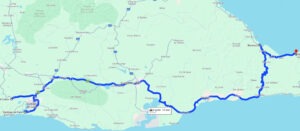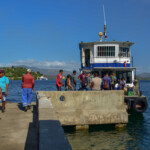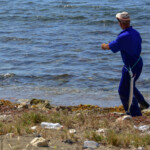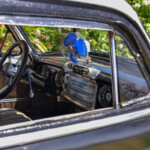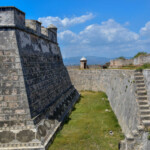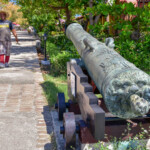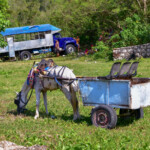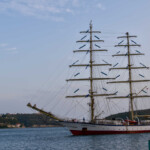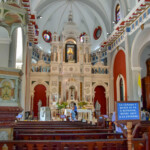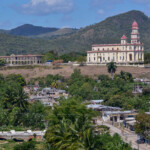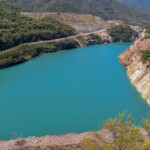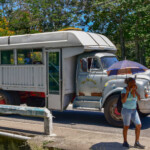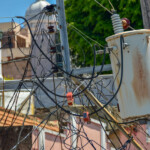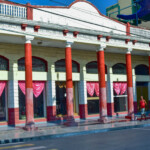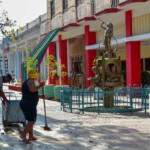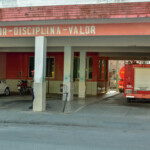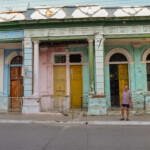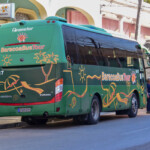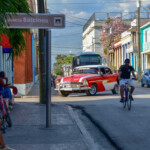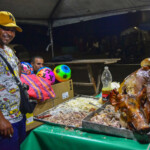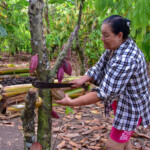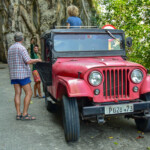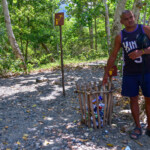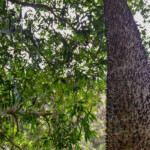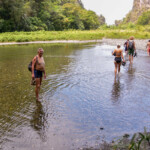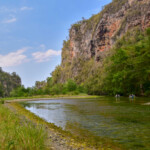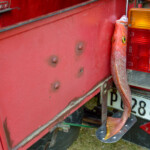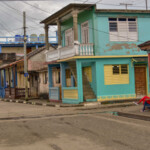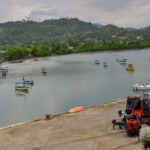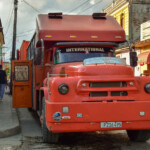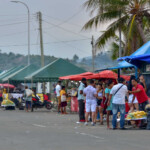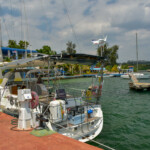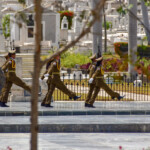Santiago de Cuba
Lying at the foot of the Sierra Maestra mountains, it is the second largest city in Cuba. It is the capital of the Orient and is known as the city of music, which has given birth to many new musical sounds and talented artists. It is also the most ethnically diverse center on the island. The first African slaves were brought here, French planters found their refuge here after the outbreak of the slave uprising in Haiti in the 18th century, and Jamaican emigrants found their refuge there. Santiago de Cuba is a cultural mix in which African influences are particularly visible. It is considered the most Caribbean of all Cuban cities.
It was the official capital of Cuba from 1524 to 1549. However, due to the destruction caused by earthquakes and frequent pirate attacks, it developed much slower than Havana, which is why it lost its lead. Santiago became the flashpoint of the Cuban Revolution, most of the most famous revolutionaries come from here, and the liberation movement was born here, which initiated the War of Independence, ending the period of Spanish domination on the island.
Santiago has always been Fidel Castro’s gem. The city’s services to the revolution are priceless. There is no shortage of memorabilia from that period in the city, one of the most important being the Moncada barracks, where Fidel Castro launched his famous attack. There is a museum of Cuba here, where we can admire many memorabilia related to the coup of the 1950s, including: Che Guevara’s shoes and Fidel Castro’s uniform. Right next to it is the Monumento Abel Santamaria, an obelisk erected in honor of one of the commanders of the attack on the barracks.
The heart of Santiago is Parque Cespedes. The most interesting monuments of the city are scattered around it, such as the house of Diego Velasquez, considered to be the oldest house in Cuba, dating from 1516-1530. It now houses the Museo de Ambiente Cubano. Nearby there are also: the 16th century governor’s house, which today serves as the town hall, the historic cathedral and the Balcon de Velasquez, which offers a beautiful view of the city and the bay. To the east of Cespedes Park you will find the oldest museum in Cuba, Museo Bacardi, which has been operating since 1899. In the museum we can admire works of art, souvenirs from the War of Independence, flags, weapons and even an Egyptian mummy. Several interesting museums are located in the nearby streets: Calle Heredica, including the Museo del Carnaval, which shows us the history of the amazing carnival in Santiago. Carnival in Santiago is one of the city’s showcases and an important element of culture. It takes place every year between July 18 and 27 and has a centuries-old tradition. At this time, the entire city turns into one big party and the streets are filled with joyful and dancing crowds.
If you find yourself near Calle Heredica, it is worth joining the Union de Escritores y Artistas de Cuba, which is simply the union of writers and artists in Cuba. It is a very interesting place where readings, publications and concerts of the best Cuban musicians often take place.
The famous Casa Granda hotel is also located near Pargue Cespedes. Before the revolution, a popular meeting place for the Cuban elite. Just before Fidel Castro’s coup, the Grand Hotel was a rather suspicious place full of spies and rebels. The hotel was described by one of its guests, Graham Greene, in the book “Our Man in Havana”.
Near the park on Bartolomeo Maso Street there is “Restaurante 1900”. Concerts of Cuban music take place here every evening. Nearby there is Fabrica de Tabaco Cesar Escalante, a cigar factory. Here we will learn everything about the production of the famous Cuban “puros”. It is also worth going to Cementario Santa Ifigenia, where many famous Cubans are buried in this necropolis, including the first president Tomas Estrada Palma and Jose Marti, whose grave attracts the most people.
The most beautiful street in Santiago – Padre Pico – is certainly worth your attention. There are 16th-century houses that were occupied by the French after they escaped from Haiti, which was ravaged by a slave uprising. On this street there is also the Museo de la Lucha Clandestina, dedicated to the heroes of the revolution. In 1956, there was a police headquarters here, but it was bombed by revolutionaries.
El Morro Castle
One of the most interesting places in Santiago is the Castillo del Moro San Pedro de la Roca castle, located 8 km from the city. It is located on the shores of the Bahia de Santiago bay and houses the Pirate Museum. We will learn about the turbulent history of pirate raids on the city, including the famous pirates Jacquea de Sores and Henry Morgan. The castle also offers beautiful views. Admission is 100 CUP per person and an additional fee of 250 CUM for photography.
Revolution Square
It is located in the northern part of Santiago. In the center there is a monument on a horse and about 26 steel bars symbolizing the clubs with which the insurgents fought for freedom. Under the monument there is a holographic museum, where instead of exhibits there are holograms of these exhibits – an interesting idea.
El Cobre
A town located approximately 30 km east of Santiago. You can get there by a “camioneta”, i.e. a truck adapted to transport people for 50 CUP per person. The Camioneta departs from Calle Terminal 4. The Basilica of the Blessed Virgin Mary is worth a visit. There is also a nice blue-green lake after an old copper mine. They can be viewed from above.
Guantanamo
A nice town next to a US military base, although the base is next to the city. In the center there is some greenery, a church, several hotels and a shopping arcade. All in all, the town is very neat and nice. It’s worth stopping for a moment.
Baracoa
Baracoa was also the first settlement founded by the Spanish in Cuba and its first capital. After the capital was moved first to Santiago and then to Havana, Baracoa fell into decline. Currently, the city is booming again, more and more tourists are beginning to appreciate the beauty of this city, and therefore the infrastructure is beginning to develop very quickly.
The life of the city centers around Parque Independencia, where there is a monument in honor of the Indian chief Hatuey, who was burned by the Spanish. The monument is located opposite the magnificent Catedral de Nuestra Senora de la Asuncion. Inside the temple we can see Cruz de la Parra, which was brought by Columbus himself.
In the western part of the city there is the La Punta fortress, which currently houses a restaurant and the Fuerte Matachin museum, which is considered the best museum of the Guantanamo province. There are very interesting exhibits related to the revolution, the history of the region, nature, etc.



